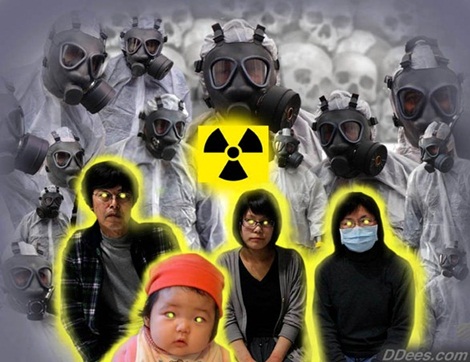
By Christopher J. Petherick –
In mid-March 2011, only days after a 50-foot-high tsunami struck the Fukushima Daiichi nuclear reactor 130 miles north of Tokyo, knocking out its entire cooling system, residents along the West Coast of the United States and Canada were advised to stock up on medicines in the event that a highly toxic radioactive cloud dispersed into the air over Japan and headed east toward the United States.
Thankfully, that situation never happened. But, today, there’s a far worse scenario slowly making its way to the United States that comes courtesy of slow-moving Pacific Ocean currents, which are moving highly contaminated waters around Japan’s devastated nuclear plant east to Hawaii and the West coast, then splitting and going north and west to Alaska and Russia, and south and west to the Philippines.
The problem now is that scientists are at a loss as to how to contain this pending disaster. What if large quantities of radioactive materials, which leaked into the sea when Fukushima went critical, slowly poison seas around the world, leading to contaminated seafood and widespread die-offs of ocean life? What will this do to living things on the West Coast?
No one knows just how much radioactive material was dumped into the sea around Fukushima, as the Japanese government has been characteristically tight lipped.
In late March, Japan’s government said scientists took samples of seawater from the Pacific Ocean around Fukushima. The government admitted that just north of the reactor, seawater was found to contain 1,150 times the safe limit of radioactive iodine. South of the site, that amount was 1,850 times.


But did that really show the true extent of the disaster?
In September 2011, London’s Telegraph daily newspaper reported on a gathering of Japanese scientists with the Meteorological Research Institute and the Central Research Institute of the Electric Power Industry. These academics conceded that approximately 3,500 terabecquerels of cesium-137 were “released into the sea directly from the plant between March 11, when the earthquake and tsunami struck, and the end of May. Another 10,000 terabecquerels of cesium fell into the ocean after escaping from the reactors in the form of steam.”
A becquerel (Bq) is a standard measurement of radiation. One terabecquerel (TBq) is the equivalent of a trillion Bqs. That’s a huge amount of this deadly substance.
Keep in mind that there is no precedent for this type of disaster.
The notorious meltdown at the Three Mile Island nuclear reactor on March 28, 1979, in Dauphin County, Pa., was located along the Susquehanna River, which somewhat limited the extent to which toxic materials could be carried to distant lands. Eventually, Three Mile Island was brought under control, but not before an estimated 40,000 gallons of radioactive wastewater were dumped into the river. Pennsylvanians moved quickly to contain the problem, but a decade later they were still cleaning up the mess, which was estimated to cost around $1 billion.
The next major nuclear disaster occurred on April 26, 1986, at the Chernobyl nuclear power plant in Ukraine, located along the Pripyat River, which feeds into the Dnieper River and in turn into the Black Sea. At the time, the Soviets did their best to cover up the damage, which many people believe actually made the disaster worse.
To this day a 20-mile exclusion zone remains in place around Chernobyl, but the fallout has not been limited to just Ukraine. According to published reports, fish as far away as Western Europe were reportedly found to have radioactive levels above what is considered safe. And, 25 years later, wild boars in Germany still routinely exceed Germany’s accepted radiation limit in meat. A report in Annals of the New York Academy of Sciences published in 2009 estimated that nearly 1 million people have died over the years as a result of cancers attributable to Chernobyl.
In the meantime, environmentalists are pressuring Japan to come clean about the damage to the Pacific.
In October, Greenpeace activists in Japan collected samples of fish sold along the east coast there. They found that more than half of the products they purchased in grocery stores were contaminated with high levels of radioactive cesium-134 and cesium-137.
“The samples are well below the 500 becquerel per kilogram limit set by the authorities,”Wakao Hanaoka, a Greenpeace activist, told Agence France Presse, “[but] the contaminated seafood still represents a health risk.”
The good news is scientists in the U.S. are quietly preparing for the likelihood that the U.S. coastline will be contaminated.
And how long will it be before Fukushima’s radioactive materials start washing up on America’s shores? The unfortunate answer is, no one knows. Sandra Patridge, a spokeswoman for Washington state’s Department of Ecology, told this writer that she has seen emails from scientists predicting that it could come as early as 2025.

